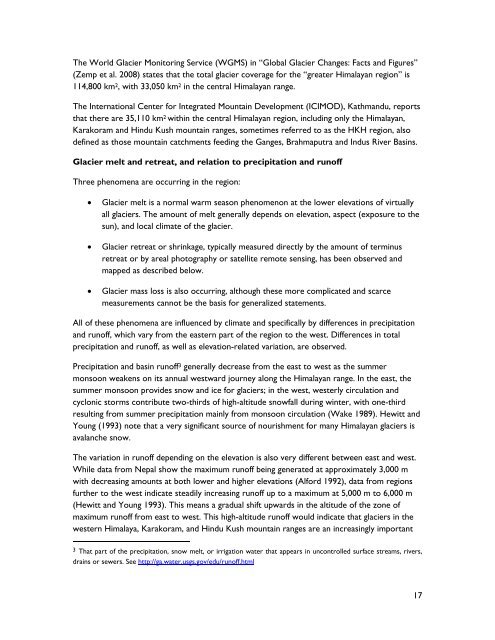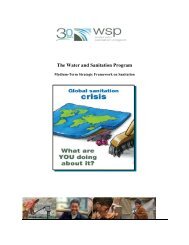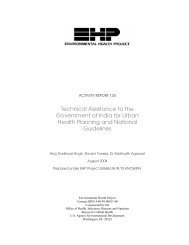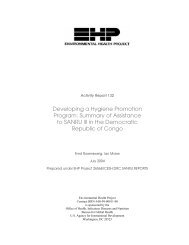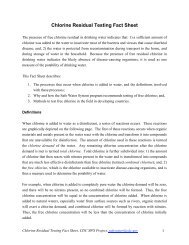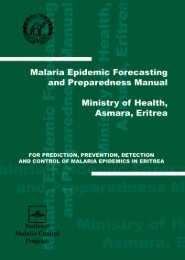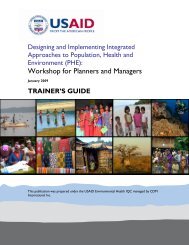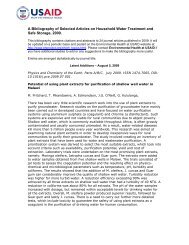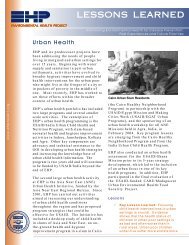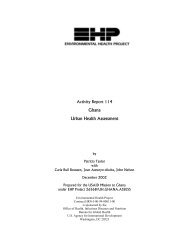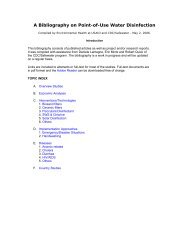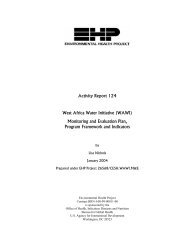Changing Glaciers and Hydrology in Asia - Environmental Health at ...
Changing Glaciers and Hydrology in Asia - Environmental Health at ...
Changing Glaciers and Hydrology in Asia - Environmental Health at ...
- No tags were found...
Create successful ePaper yourself
Turn your PDF publications into a flip-book with our unique Google optimized e-Paper software.
The World Glacier Monitor<strong>in</strong>g Service (WGMS) <strong>in</strong> “Global Glacier Changes: Facts <strong>and</strong> Figures”(Zemp et al. 2008) st<strong>at</strong>es th<strong>at</strong> the total glacier coverage for the “gre<strong>at</strong>er Himalayan region” is114,800 km 2 , with 33,050 km 2 <strong>in</strong> the central Himalayan range.The Intern<strong>at</strong>ional Center for Integr<strong>at</strong>ed Mounta<strong>in</strong> Development (ICIMOD), K<strong>at</strong>hm<strong>and</strong>u, reportsth<strong>at</strong> there are 35,110 km 2 with<strong>in</strong> the central Himalayan region, <strong>in</strong>clud<strong>in</strong>g only the Himalayan,Karakoram <strong>and</strong> H<strong>in</strong>du Kush mounta<strong>in</strong> ranges, sometimes referred to as the HKH region, alsodef<strong>in</strong>ed as those mounta<strong>in</strong> c<strong>at</strong>chments feed<strong>in</strong>g the Ganges, Brahmaputra <strong>and</strong> Indus River Bas<strong>in</strong>s.Glacier melt <strong>and</strong> retre<strong>at</strong>, <strong>and</strong> rel<strong>at</strong>ion to precipit<strong>at</strong>ion <strong>and</strong> runoffThree phenomena are occurr<strong>in</strong>g <strong>in</strong> the region:Glacier melt is a normal warm season phenomenon <strong>at</strong> the lower elev<strong>at</strong>ions of virtuallyall glaciers. The amount of melt generally depends on elev<strong>at</strong>ion, aspect (exposure to thesun), <strong>and</strong> local clim<strong>at</strong>e of the glacier.Glacier retre<strong>at</strong> or shr<strong>in</strong>kage, typically measured directly by the amount of term<strong>in</strong>usretre<strong>at</strong> or by areal photography or s<strong>at</strong>ellite remote sens<strong>in</strong>g, has been observed <strong>and</strong>mapped as described below.Glacier mass loss is also occurr<strong>in</strong>g, although these more complic<strong>at</strong>ed <strong>and</strong> scarcemeasurements cannot be the basis for generalized st<strong>at</strong>ements.All of these phenomena are <strong>in</strong>fluenced by clim<strong>at</strong>e <strong>and</strong> specifically by differences <strong>in</strong> precipit<strong>at</strong>ion<strong>and</strong> runoff, which vary from the eastern part of the region to the west. Differences <strong>in</strong> totalprecipit<strong>at</strong>ion <strong>and</strong> runoff, as well as elev<strong>at</strong>ion-rel<strong>at</strong>ed vari<strong>at</strong>ion, are observed.Precipit<strong>at</strong>ion <strong>and</strong> bas<strong>in</strong> runoff 3 generally decrease from the east to west as the summermonsoon weakens on its annual westward journey along the Himalayan range. In the east, thesummer monsoon provides snow <strong>and</strong> ice for glaciers; <strong>in</strong> the west, westerly circul<strong>at</strong>ion <strong>and</strong>cyclonic storms contribute two-thirds of high-altitude snowfall dur<strong>in</strong>g w<strong>in</strong>ter, with one-thirdresult<strong>in</strong>g from summer precipit<strong>at</strong>ion ma<strong>in</strong>ly from monsoon circul<strong>at</strong>ion (Wake 1989). Hewitt <strong>and</strong>Young (1993) note th<strong>at</strong> a very significant source of nourishment for many Himalayan glaciers isavalanche snow.The vari<strong>at</strong>ion <strong>in</strong> runoff depend<strong>in</strong>g on the elev<strong>at</strong>ion is also very different between east <strong>and</strong> west.While d<strong>at</strong>a from Nepal show the maximum runoff be<strong>in</strong>g gener<strong>at</strong>ed <strong>at</strong> approxim<strong>at</strong>ely 3,000 mwith decreas<strong>in</strong>g amounts <strong>at</strong> both lower <strong>and</strong> higher elev<strong>at</strong>ions (Alford 1992), d<strong>at</strong>a from regionsfurther to the west <strong>in</strong>dic<strong>at</strong>e steadily <strong>in</strong>creas<strong>in</strong>g runoff up to a maximum <strong>at</strong> 5,000 m to 6,000 m(Hewitt <strong>and</strong> Young 1993). This means a gradual shift upwards <strong>in</strong> the altitude of the zone ofmaximum runoff from east to west. This high-altitude runoff would <strong>in</strong>dic<strong>at</strong>e th<strong>at</strong> glaciers <strong>in</strong> thewestern Himalaya, Karakoram, <strong>and</strong> H<strong>in</strong>du Kush mounta<strong>in</strong> ranges are an <strong>in</strong>creas<strong>in</strong>gly important3 Th<strong>at</strong> part of the precipit<strong>at</strong>ion, snow melt, or irrig<strong>at</strong>ion w<strong>at</strong>er th<strong>at</strong> appears <strong>in</strong> uncontrolled surface streams, rivers,dra<strong>in</strong>s or sewers. See http://ga.w<strong>at</strong>er.usgs.gov/edu/runoff.html17


